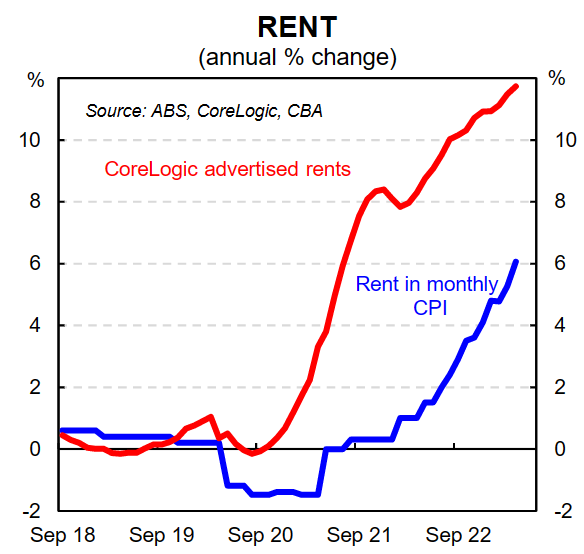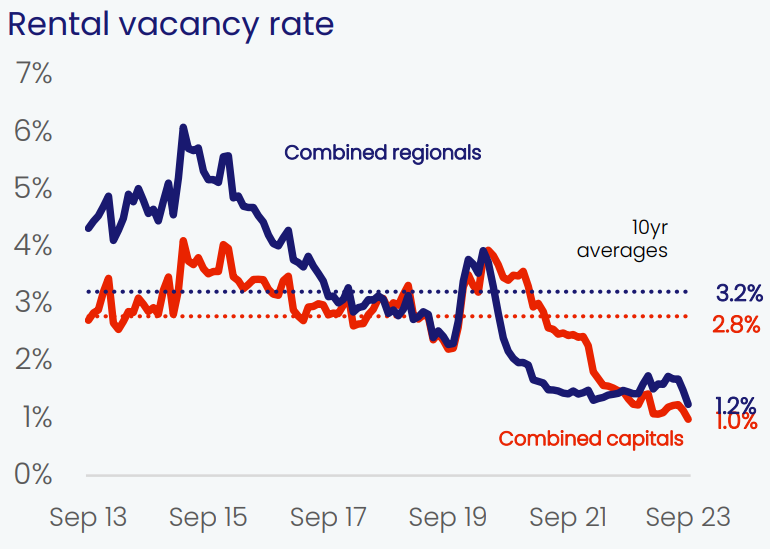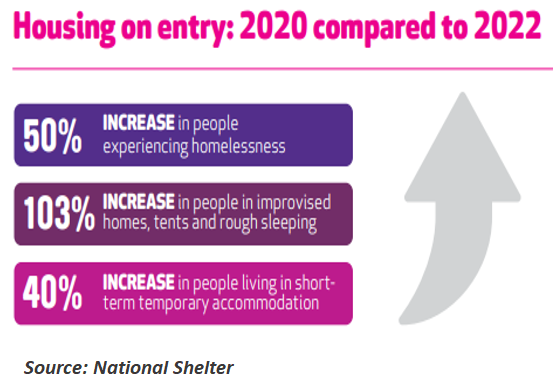On Tuesday, RBA governor Michele Bullock gave her maiden speech where she claimed that Australian renters are better-off today than they were in 2021 thanks to income growth outpacing the growth in rents as measured by the CPI:

According to Bullock: “the spare cash flow of renters has, on average, risen a little as high inflation and rising rents have been more than offset by growth in income”.
This analysis does not pass the pub test.
First, the RBA has used the Household Expenditure Measure (HEM) to gauge essential expenses. The HEM assumes that a household’s basic discretionary spending is at the 25% percentile, meaning 75% of households will spend more than this HEM household.
Using the HEM almost certainly understates household expenditures and underplays the cost-of-living impacts on renters.
Second, CPI rents is a lagging indicator that has yet to catch-up with the strong growth in asking rents, as measured by CoreLogic, SQM Research, PropTrack, and Domain:

Third, record numbers of Australian households are being forced to work multiple jobs or longer hours to make ends meet:

Fourth, rental vacancy rates have collapsed to a record low of just 1.0% (capital cities) and 1.2% (regions):

Source: CoreLogic
Fifth, Flatmates.com.au, the nation’s largest share house website, has seen a near doubling of people seeking share housing.
Sixth, National Shelter reported that there was a 50% increase in homelessness between 2020 and 2022, and a 103% increase in people living in “improvised homes” and “rough sleeping”:

The figures would have worsened in 2023 amid the record surge in immigration.
Telling Australian renters that they are better off when many are struggling to find a home, being pushed into share housing, or onto the streets, is a poor look for the new RBA governor.

